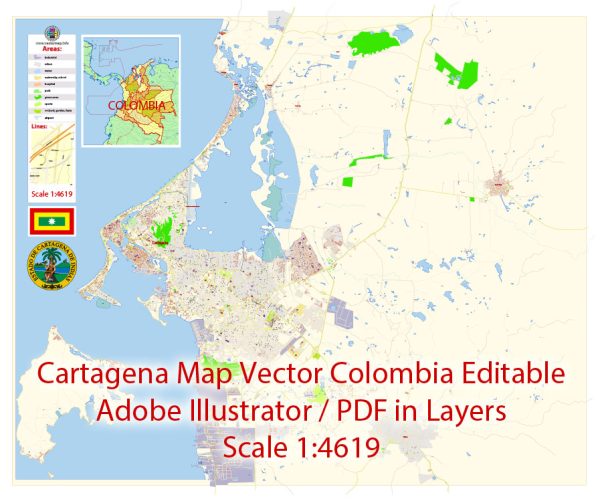The history of urban development in Cartagena, Colombia, is a fascinating story that spans several centuries and reflects the city’s rich cultural and architectural heritage. Cartagena is one of the most historically significant cities in Latin America, and its urban development has been shaped by a variety of influences over the years.
- Pre-Colonial Era: The area where Cartagena is located was originally inhabited by indigenous people, including the Caribs and the Sinú, long before the arrival of the Spanish. These indigenous groups had their own settlements and trading networks along the Caribbean coast.
- Spanish Colonial Period (16th Century): Cartagena was founded by the Spanish in 1533 by Pedro de Heredia, making it one of the earliest Spanish settlements in the Americas. The city was established to serve as a key port for shipping gold and other riches plundered from the indigenous people and later from South America. The city’s layout was designed to withstand pirate attacks, with defensive walls, forts, and a system of forts and cannons. The historic walled city of Cartagena, known as the Ciudad Amurallada, was constructed during this period and remains a UNESCO World Heritage site today.
- African Influence: During the colonial period, Cartagena was a major hub of the transatlantic slave trade. African slaves were brought to the city, and their influence can be seen in the city’s culture, music, and cuisine. The neighborhood of Getsemaní, just outside the city walls, was a significant area where Afro-Colombian culture thrived.
- Independence and Republican Era (19th Century): Cartagena played a vital role in the struggle for Colombian independence from Spanish rule. It was the first city in Colombia to declare independence from Spain in 1811. The city saw significant battles and events during the independence movement, and its role in Colombia’s history is commemorated throughout the city.
- Modern Development (20th Century): Cartagena continued to grow and evolve throughout the 20th century. The city expanded beyond its colonial walls, with the development of new neighborhoods and infrastructure. Tourism became a major economic driver, as visitors from around the world flocked to the city’s historic center, beautiful beaches, and vibrant culture.
- Preservation and Tourism (21st Century): In recent decades, there has been a strong focus on preserving Cartagena’s historic architecture and cultural heritage. The city’s colonial architecture, vibrant street life, and historic sites have made it a popular tourist destination. Efforts have been made to maintain and restore the city’s historic buildings, while also modernizing its infrastructure and services to accommodate the growing tourism industry.
Today, Cartagena is a city that beautifully blends its rich history with a vibrant present. Its historic center is a picturesque maze of cobbled streets, colorful buildings, and lively plazas, while the city’s modern areas offer a dynamic urban experience. The history of urban development in Cartagena is a testament to the city’s resilience, cultural diversity, and historical significance in the region.


 Author: Kirill Shrayber, Ph.D.
Author: Kirill Shrayber, Ph.D.